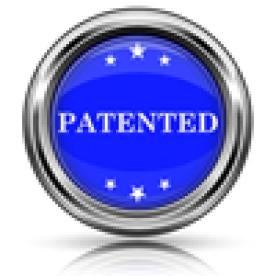Takeaway: The Board will consider a petitioner’s argument that the patent-at-issue is not entitled to an earlier priority date because the challenged claims lack written descriptive support in the parent applications, and will not dismiss it per se as an attempt to circumvent the statute, which only allows anticipation and obviousness arguments in inter partes reviews.
In its Decision, the Board denied institution of inter partes review of any of the challenged claims of the ’506 Patent. The ’506 Patent is directed to the treatment of “all known types of acne,” broadly defined as “a disorder of the skin characterized by papules, pustules, cysts, nodules, comedones, and other blemishes or skin lesions.”
The Board began by discussing the priority date of the ’506 Patent. The ’506 Patent issued from a chain of continuation and divisional applications first filed on April 5, 2002. Petitioner argued that the alleged prior art qualifies as prior art because the challenged claims lack written descriptive support in the non-provisional parent applications and are, therefore, not entitled to claim the benefit of the filing date of those applications under 35 U.S.C. § 120. Patent Owner argued that Petitioner’s attack on the written description support should be rejected as an attempt to circumvent the statute which only allows anticipation or obviousness challenges in inter partes review. However, the Board did not find this argument persuasive and decided it would address the merits of the priority challenge.
The Board first discussed claim construction, stating that the claim terms are given their broadest reasonable construction in light of the specification. Regarding the term “rosacea,” the Board adopted the patent’s identification of rosacea as a form of acne. Regarding the terms “papules” and “pustules,” the Board defined them as inflammatory lesions or blemishes of the skin, where “papules” are solid, rounded bumps rising from the skin that are each usually less than 1 centimeter in diameter, and “pustules” are small, inflamed, pus-filled blister-like lesions of the dermis or epidermis.
The Board then reviewed the written descriptive support in the continuation applications. Petitioner first argued that rosacea is only mentioned twice in the specification, and that no dermatologist of ordinary skill in the art would have lumped common acne and rosacea together in the single genus type of acne. The Board did not find these arguments persuasive. The Board noted that an inventor may choose to be his own lexicographer, and there is no ambiguity that the ’506 Patent defines “all known types of acne” to include rosacea.
Petitioner also argued that the parent application lacks written descriptive support for administering doxycycline as recited in the claim method. The Board did not find any lack of support for the use of doxycycline for treating “all known types of acne,” including rosacea.
Petitioner next argued that the parent applications lack written descriptive support for the dosage regimen of doxycycline recited in the claim method because nothing in the specification teaches the use of any particular amount of an antibiotic or non-antibiotic compound to treat rosacea. However, the Board found support in the specification describing antibiotic and non-antibiotic dosages.
Finally, Petitioner contended that the limitation “without administering a biosphate compound” is without written descriptive support because the specification provides no reason to exclude a bisphonate compound. However, the Board noted that the Federal Circuit does not require the specification to detail the benefits of a negative limitation.
Therefore, the Board found that Petitioner had not shown that the ’506 Patent is not entitled to the benefit of the April 5, 2001 filing date such that the alleged prior art would qualify as prior art. Petition denied.
Dr. Reddy’s Laboratories, Ltd. and Dr. Reddy’s Laboratories, Inc. v. Galderma Laboratories, Inc., IPR2015-01778
Paper 11: Decision Denying Institution of Inter Partes Review
Dated: February 16, 2016
Patent 8,603,506 B2
Before: Erica A. Franklin, Zhenyu Yang, and Robert A. Pollock
Written by: Pollock
Related Proceedings: Civil Action No. 15-670 (D. Del.); IPR2015-01777; IPR2015-01782



 />i
/>i


